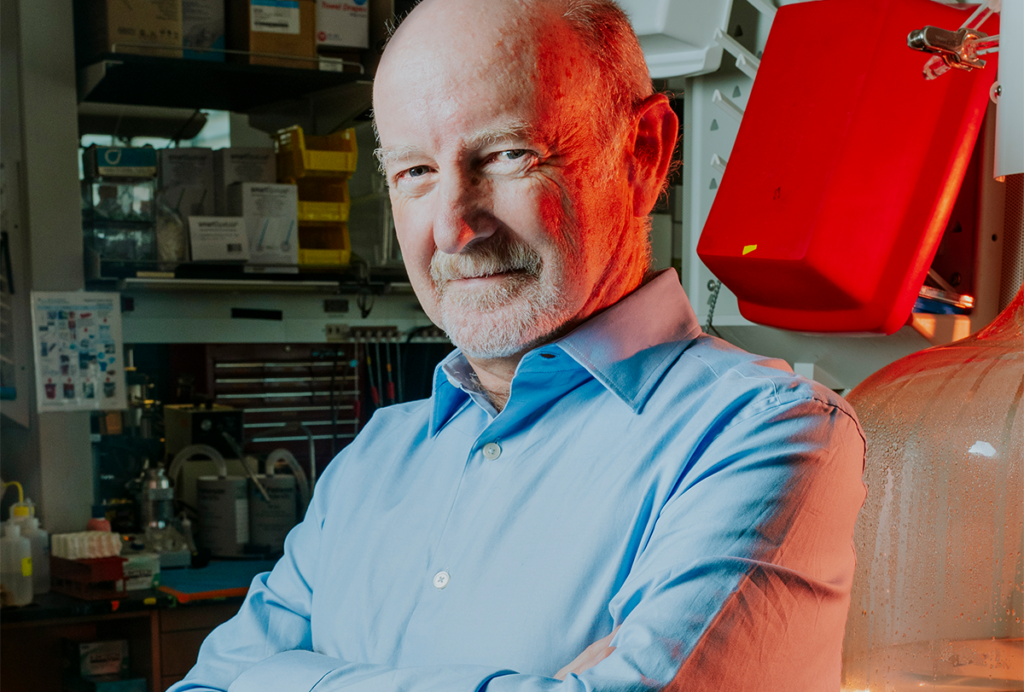Schizophrenia deletion could rouse silent mutations
Deletion of 22q11, a schizophrenia-associated chromosomal region, may activate previously silent mutations, according to unpublished work presented Sunday at the 2011 Society for Neuroscience annual meeting in Washington, D.C.
-
Regulating region: Short fragments of RNA may protect cells from mutations that lead to certain disorders.
Deletion of 22q11, a schizophrenia-associated chromosomal region, may activate previously silent mutations, according to unpublished work presented Sunday at a symposium at the 2011 Society for Neuroscience annual meeting in Washington, D.C.
These silent mutations vary among individuals, potentially explaining why only about 25 percent of individuals with the 22q11 deletion develop schizophrenia, says lead investigator Linda Brzustowicz, professor of genetics at Rutgers University in New Jersey.
Studies have shown that deletions or duplications of chromosomal regions, called copy number variations, are associated with both autism and schizophrenia. But even the most significant of these, such as the 16p11.2 region linked to autism, lead to the disorder in only a subset of the carriers.
There are several possible explanations for this variable, including environmental factors and mutations on other copies of the chromosomal region, says Brzustowicz. “But there may also be something going on elsewhere in the genome that’s sending people down this pathway towards schizophrenia.”
One such possibility follows from a 2008 study that identified a gene in the 22q11 region, called DGC8, that is essential for the synthesis of a number of short RNA fragments. So-called microRNAs regulate gene expression by interfering with the RNA messages that code for proteins1.
Dysfunction in these microRNAs could activate previously silent mutations in the genomes of individuals with 22q11 deletions, says Brzustowicz. Because different people carry different silent mutations, even those who carry the same deletion might show a wide range of symptoms.
To investigate this hypothesis, the researchers first looked for genetic variants associated with individuals who have the 22q11 deletion and schizophrenia. They scanned the genomes of 96 families that have at least one person with the 22q11 deletion. Half of those with the deletion have schizophrenia and the other half do not.
Using an association analysis that factors in family history, the researchers identified 540 candidate genes.
MicroRNAs known to be dysregulated as a result of 22q11 deletion are more likely to regulate these 540 candidate genes than other genes in the genome, the study found.
“We think this result is pointing to the idea that our hypothesis is correct,” says Brzustowicz. “The 22q deletion system is uncovering preexisting mutations in these people that then have a chance to alter regulation and increase [schizophrenia] risk.”
For more reports from the 2011 Society for Neuroscience annual meeting, please click here.
References:
1: Stark K.L. et al. Nat. Genet. 40, 751-760 (2008) PubMed
Recommended reading

PTEN problems underscore autism connection to excess brain fluid

Autism traits, mental health conditions interact in sex-dependent ways in early development

New tool may help untangle downstream effects of autism-linked genes
Explore more from The Transmitter

Newly awarded NIH grants for neuroscience lag 77 percent behind previous nine-year average

